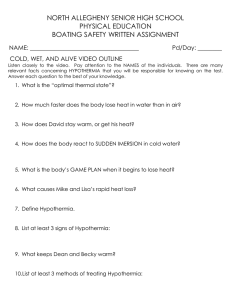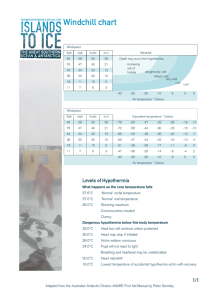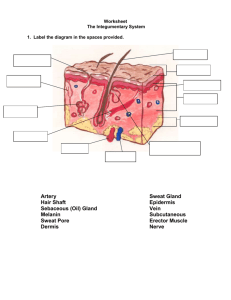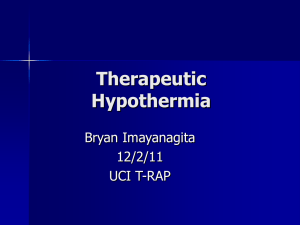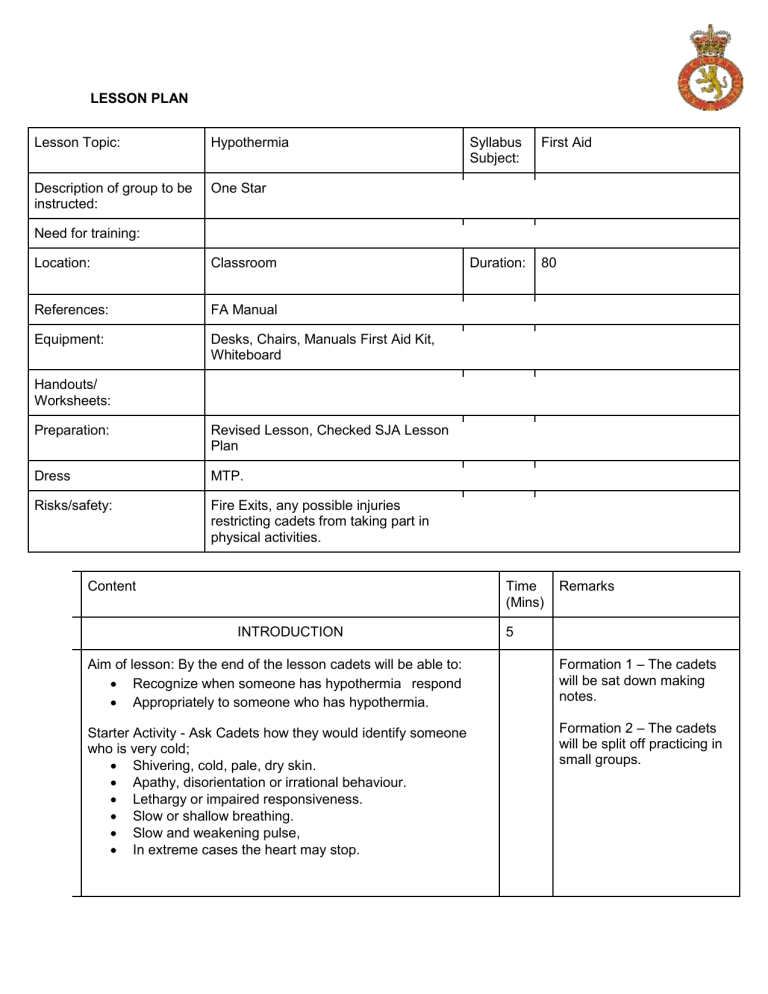
LESSON PLAN Lesson Topic: Hypothermia Description of group to be instructed: One Star Syllabus Subject: First Aid Duration: 80 Need for training: Location: Classroom References: FA Manual Equipment: Desks, Chairs, Manuals First Aid Kit, Whiteboard Handouts/ Worksheets: Preparation: Revised Lesson, Checked SJA Lesson Plan Dress MTP. Risks/safety: Fire Exits, any possible injuries restricting cadets from taking part in physical activities. Ser 1 Content Time (Mins) INTRODUCTION Aim of lesson: By the end of the lesson cadets will be able to: Recognize when someone has hypothermia respond Appropriately to someone who has hypothermia. Starter Activity - Ask Cadets how they would identify someone who is very cold; Shivering, cold, pale, dry skin. Apathy, disorientation or irrational behaviour. Lethargy or impaired responsiveness. Slow or shallow breathing. Slow and weakening pulse, In extreme cases the heart may stop. Remarks 5 Formation 1 – The cadets will be sat down making notes. Formation 2 – The cadets will be split off practicing in small groups. Main Body – Development 2 a Explain to the cadets what hypothermia is caused by and what it is; b c This is a condition that develops when the body temp falls below 35°C, moderate hypothermia can usually be reversed. Severe hypothermia – when the body temp falls below 30 °c is often, but not always fatal. Hypothermia is caused by prolonged exposure to the cold. Moving air has a much greater cooling effect than still air, so a high “Wind-Chill factor” in cold weather can substantially increase the risk of a person developing hypothermia. Immersion to cold water can cause death from hypothermia – when surrounded by cold water, the body can cool up to 30 times faster than in dry air, and body temp falls rapidly. Lack of activity, chronic illness and fatigue all increase the risk; alcohol and drugs can worsen the condition. Outdoors Treatment 10 Take the casualty to a sheltered place as quickly as possible. Shield the casualty from the wind. Remove and replace any wet clothing if possible; do not give them your clothes. Make sure their head is covered. Protect the casualty from the ground; lay them on a thick layer of dry insulating material, such as pine branches, heather or bracken. Put them in a dry sleeping bag – Alternatives; cover in blankets, newspaper or just wrap him up. Wrap him in a plastic of foil survival bag. Call 999/112 or send for emergency help – do not leave the casualty alone. To help re-warm a casualty who is full alert, give them warm drinks and high-energy foods such as chocolate if available. Monitor and record vital signs. 15 Formation 1 Indoors treatment 15 Re-warm the Casualty – cover them with blankets and warm the room to about 25°C. Give them a warm drink such as soup and and/or highenergy foods such as chocolate to help rewarm them. Seek medical advice. Be aware that hypothermia may also be disguising the symptoms of a serious underlying illness such as a stroke, heart attack or underactive thyroid gland. Monitor and record vital signs. Second half of Det night Split the cadets off into groups and allow them to make posters etc on how to treat hypothermia (indoors and outdoors) the symptoms of hypothermia as well as what it actually is. Allow them to present these posters to the other cadets. – This will confirm their knowledge of the lesson. 3 Formation 2. 20 15 CONCLUSION End of lesson drills – This lesson you have learnt – How to recognise someone who has hypothermia as well as being able to effectively respond to someone who has hypothermia. Look forward to your next lesson … Pack any equipment away 5
